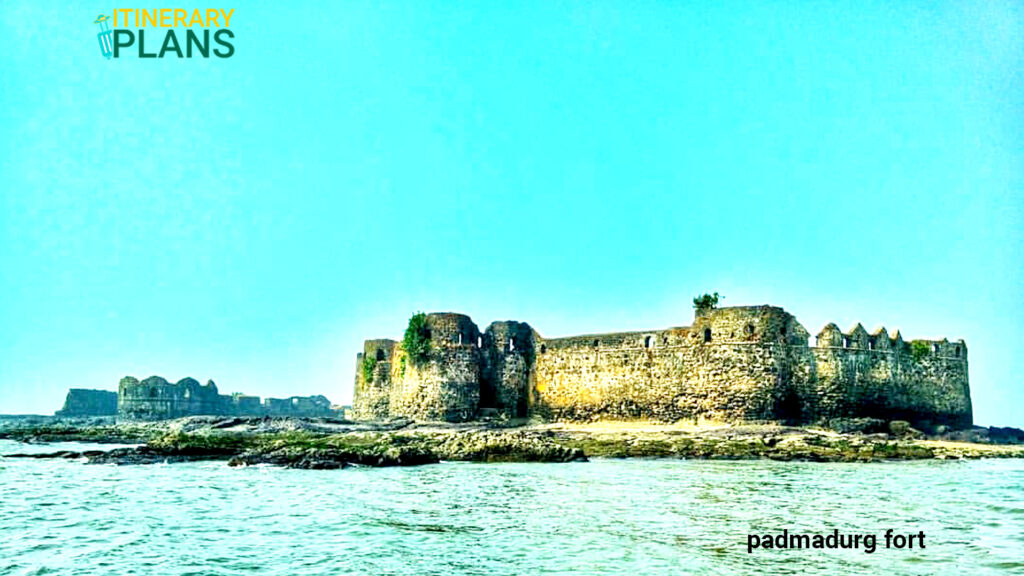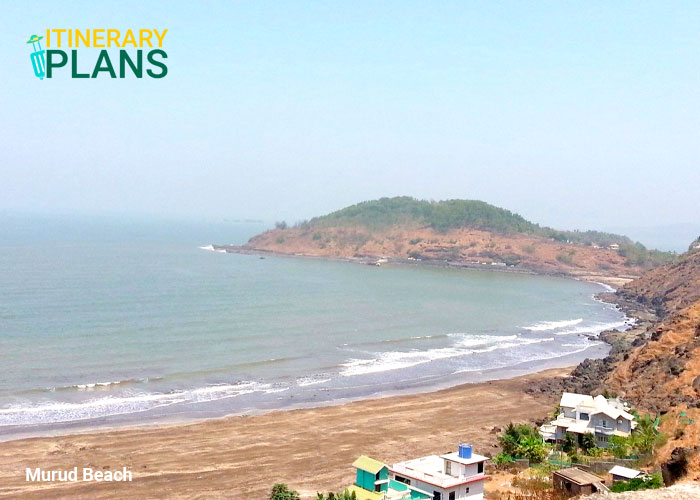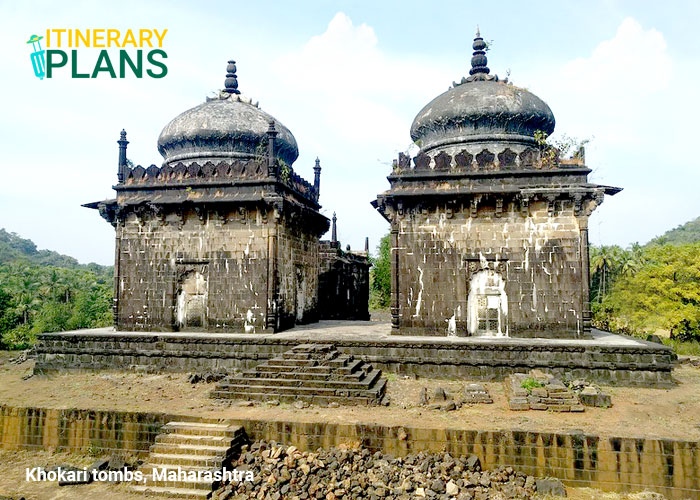If you are a history lover, this article is for you. Padmadurg’s story is intricately woven with the ebb and flow of the Konkan, a testament to human ingenuity and the enduring power of history. In this guide, you will learn a full itinerary for Padmadurg Fort along with a map, location, best time to visit, things to do, tips for travel, and much more information. Hope it will help you to enjoy the fort.
Table of Contents
Map
Overview of Padmadurg Fort
- Location: Murud-Janjira coast, Raigad district, Maharashtra, India.
- Height: Approximately 30 meters (98 feet) above sea level.
- Built by: Maratha King Hatrapati Shivaji Maharaja, in the 17th century (around 1676).
- Purpose: To control naval activities in the Arabian Sea and challenge the dominance of the nearby Janjira fort.
- Current use: A historical monument and tourist destination.
- Best time to visit: October to March, during the dry season with pleasant weather.
- Difficulty level: Moderate. The climb to the fort can be steep and challenging, especially in hot weather.
- Time required: Approximately 2-3 hours to explore the fort and its surroundings.
History of Padmadurg Fort
The Maratha king Shivaji constructed Padmadurg (Lotus Fort) in 1676 to respond to the Siddis’ mighty Janjira fort. Its strategic location on a rock in the Arabian Sea helped control naval activity and challenge Janjira’s dominance. Though never conquered, Padmadurg witnessed heroic attempts by Maratha warriors like Moro Pant to capture Janjira. Today, it is a testament to Shivaji’s naval ambitions and the fierce battles fought for maritime control.
When is the best time to visit Padmadurg Fort?
The best time to visit Padmadurg Fort depends on your priorities and what you want to get out of your trip. Here’s a breakdown of the pros and cons of different times to visit:
- October to March: This is the peak season in Maharashtra, so the weather is pleasant and plenty of events and festivals are happening. However, it can also be crowded and expensive.
- April to May: The weather is still hot, but the crowds have thinned out and prices are starting to drop. This is a good time to visit if you’re on a budget.
- June to September: The monsoon season brings heavy rain and high humidity, so it’s not the best time to visit if you’re looking for good weather. However, the fort is less crowded, and the lush greenery is beautiful.
Ultimately, the best time to visit Padmadurg Fort is whenever it works best for you. If you’re flexible with your dates, you can avoid the crowds and high prices by visiting during the shoulder seasons (April–May and September–October). However, if you’re set on visiting during the peak season, be prepared for crowds and higher prices.
Padmadurg Fort Itinerary:
Padmadurg Fort, also known as Kasa Fort, is a stunning historical landmark situated near Murud, Maharashtra. Its strategic location overlooking the Arabian Sea makes it a must-visit for history buffs and nature lovers alike. Here’s a suggested itinerary for a 2-day trip to Padmadurg, including nearby attractions:
Day 1: Murud Beach

-
Murud-Beach Morning: Start your day early with a refreshing swim at Murud Beach. Enjoy the sunrise and the beautiful view of the Janjira and Padmadurg forts.
- Breakfast: After swimming, head to a local restaurant near the beach for a delicious Maharashtrian breakfast like vada pav, misal pav, or poha.
- Mid-morning: Take a boat from Murud Jetty to Padmadurg Fort. The boat ride offers stunning views of the coastline and the fort itself.
- Lunch: Pack a picnic lunch or enjoy a simple meal at the small canteen inside the fort. Explore the fort’s ramparts, bastions, and water cisterns, and learn about its rich history.
-
Khokari-tombs Afternoon: Spend your afternoon exploring the nearby villages of Murud and Janjira. Visit the Khokari tombs, a group of ancient stone tombs carved into the hillside.
- Dinner: Enjoy a fresh seafood dinner at a restaurant on Murud Beach. Savor the catch of the day while watching the sunset over the Arabian Sea.
- Where to spend the night: Numerous hotels and homestays are available in Murud. Choose one that suits your budget and preferences.
Day 2: Janjira Fort
- Morning: Visit the Janjira Fort, another impressive sea fort located offshore from Murud. You can take a boat from Murud Jetty or trek to the fort from the beach.
- Lunch: Pack a lunch or enjoy a meal at a restaurant near the Janjira Fort entrance.
- Afternoon: Spend your afternoon exploring the fort’s interior, including its mosques, palaces, and cannons. Learn about its history as an unconquered fort and its role in the Maratha Empire.
- Evening: Take a boat back to Murud Beach and enjoy some leisure time on the beach. You can go for a swim, sunbathe, or build sandcastles.
- Dinner: Enjoy a farewell dinner at a restaurant on Murud Beach. Try some local delicacies like kolambi fry, chicken sukha, or solkadi.
- Where to break: Take breaks throughout the day to rest and hydrate, especially during the hot afternoon hours. There are small shops and stalls near the forts and beaches where you can buy snacks and drinks.
What should I carry to Padmadurg Fort?
To ensure a comfortable and enjoyable visit to Padmadurg Fort, here are some things you should consider carrying:
- Waterproof trekking shoes: You’ll be doing some walking and climbing stairs, so sturdy shoes are a must.
- Sun protection: hats, sunscreen, and sunglasses (especially in the afternoon).
- Water and snacks: Stay hydrated and energized, especially if you’re spending a longer time there.
- Camera: Capture the amazing views and historical details. Keep in mind the camera bag.
- Tickets/Money: For entry and any potential purchases.
- Binoculars: If you’re interested in birdwatching or getting a closer look at the fort, bring a pair of binoculars.
- Torch: Bring a torch if you plan to stay at the fort after sunset.
- First-aid kit: It’s always a good idea to be prepared for minor cuts and scrapes.
- Wear comfortable: clothing that allows for movement.
- Check the weather: forecast before your trip and dress accordingly.
How to Reach Padmadurg Fort
Padmadurg Fort, also known as Kasa Fort, is located in the Raigad district of Maharashtra, India. To reach Padmadurg Fort, you can follow these general directions:
1. By Air:
-
Chhatrapati-Shivaji-International-Airport The nearest airport is Chhatrapati Shivaji International Airport (BOM) in Mumbai, which is about 180 km from Padmadurg Fort.
- From Mumbai, you can take a taxi or cab to Murud, the village closest to the fort. The journey takes around 4-5 hours.
- This option is the fastest but also the most expensive.
2. By Train:
- The nearest railway station is Murud Junction, which is about 15 km from Padmadurg Fort.
- Trains are available from Mumbai and Pune to Murud Junction.
- Once you reach Murud Junction, you can take a taxi or rickshaw to the fort.
- This option is more affordable than flying but takes longer.
3. By Road:
- This is the most common and convenient way to reach Padmadurg Fort, especially if you’re coming from Mumbai or Pune.
- You can take a private car or rent a taxi from Mumbai or Pune. The journey takes around 3-4 hours.
- Alternatively, you can take a state transport bus from Mumbai or Pune to Murud. The journey takes around 5–6 hours.
- Once you reach Murud, you can take a boat from Rajapuri Jetty to the fort. The boat ride takes around 30 minutes.

FAQs of Padmadurg Fort
How can I visit Padmadurg Fort?
To visit Padmadurg Fort, you must hire a personal boat and obtain permission from the Navy or Coast Guard before setting off on your sea adventure. Boats are mainly available from Murud-Koliwada, and there are no direct boat fares to the fort. The nearest international airport is in Mumbai, and the closest railway station is at Mangaon on the Konkan railway route, 60 km away.
What are the main attractions of Padmadurg Fort?
The main attractions of Padmadurg Fort are the six bastions, the 42 rusty cannons, and the 250 historical cannonballs that were found during a cleanup in 2012. You can also enjoy the view of the Arabian Sea and the neighboring Janjira Fort from the fort. However, be prepared to see the high outer walls in shambles, and the fortification wall of 100 meters collapsed.
Is Padmadurg Fort a ticketed monument?
No, Padmadurg Fort is not a ticketed monument. However, you need to pay for the boat ride and get permission from the Navy or Coast Guard to visit the fort.
What are the best times to visit the fort?
The ideal months to visit are October to March when the weather is pleasant and dry. Avoid monsoon season (June-September) due to rough seas and potential closures.
Is it difficult to reach the top of the fort?
The climb to the top of Padmadurg involves ascending several steep steps and uneven terrain. Wear appropriate footwear and be prepared for some physical exertion.
Are there any guided tours available?
Yes, several local operators offer guided tours of the fort, providing historical insights and anecdotes about its past.
Are there any facilities or amenities available near the fort?
Basic amenities like restrooms and drinking water are available near the fort. However, restaurants and shops are limited, so it’s advisable to bring your snacks and water.
Are there any hotels or accommodation options near the fort?
Several hotels and homestays are available in Murud, the mainland town closest to the island. Booking in advance is recommended, especially during peak season.
Are there any dangers or risks associated with visiting the fort?
Be cautious of slippery surfaces, uneven terrain, and strong winds. Avoid venturing near the edges or cliffs. Always prioritize safety and follow instructions from authorities.
What are the local customs and etiquette to be mindful of?
Dress modestly and respectfully, especially when visiting religious sites within the fort. Be mindful of noise levels and avoid disturbing other visitors.




